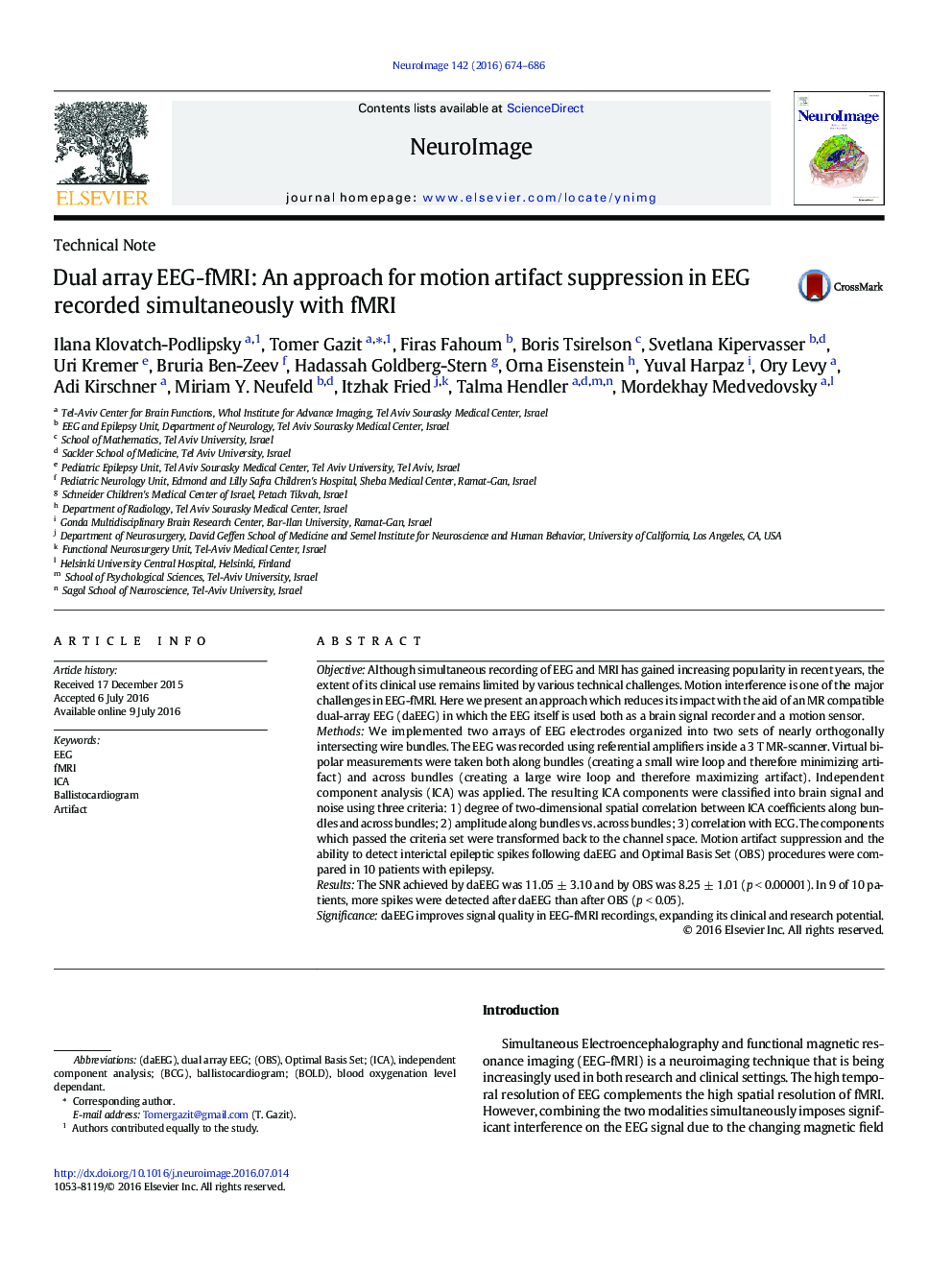| کد مقاله | کد نشریه | سال انتشار | مقاله انگلیسی | نسخه تمام متن |
|---|---|---|---|---|
| 5631472 | 1580866 | 2016 | 13 صفحه PDF | دانلود رایگان |

- A method for motion artifacts suppression in EEG recorded with fMRI is proposed.
- The method uses a novel construction of EEG array which serves as a motion sensor.
- The method improves EEG signal quality in EEG-fMRI recordings.
- Application of the method to EEG-fMRI in epilepsy is demonstrated.
ObjectiveAlthough simultaneous recording of EEG and MRI has gained increasing popularity in recent years, the extent of its clinical use remains limited by various technical challenges. Motion interference is one of the major challenges in EEG-fMRI. Here we present an approach which reduces its impact with the aid of an MR compatible dual-array EEG (daEEG) in which the EEG itself is used both as a brain signal recorder and a motion sensor.MethodsWe implemented two arrays of EEG electrodes organized into two sets of nearly orthogonally intersecting wire bundles. The EEG was recorded using referential amplifiers inside a 3 T MR-scanner. Virtual bipolar measurements were taken both along bundles (creating a small wire loop and therefore minimizing artifact) and across bundles (creating a large wire loop and therefore maximizing artifact). Independent component analysis (ICA) was applied. The resulting ICA components were classified into brain signal and noise using three criteria: 1) degree of two-dimensional spatial correlation between ICA coefficients along bundles and across bundles; 2) amplitude along bundles vs. across bundles; 3) correlation with ECG. The components which passed the criteria set were transformed back to the channel space. Motion artifact suppression and the ability to detect interictal epileptic spikes following daEEG and Optimal Basis Set (OBS) procedures were compared in 10 patients with epilepsy.ResultsThe SNR achieved by daEEG was 11.05 ± 3.10 and by OBS was 8.25 ± 1.01 (p < 0.00001). In 9 of 10 patients, more spikes were detected after daEEG than after OBS (p < 0.05).SignificancedaEEG improves signal quality in EEG-fMRI recordings, expanding its clinical and research potential.
Journal: NeuroImage - Volume 142, 15 November 2016, Pages 674-686